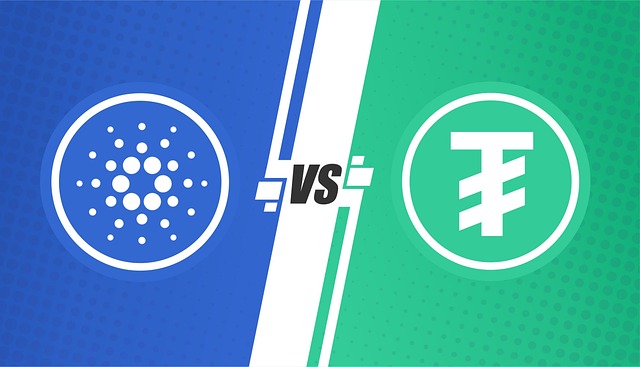Bybit Trading Fees vs Binance in 2025: A Comprehensive Analysis
Author: Jameson Richman Expert
Published On: 2025-09-05
Prepared by Jameson Richman and our team of experts with over a decade of experience in cryptocurrency and digital asset analysis. Learn more about us.
As cryptocurrency trading continues its exponential growth in 2025, understanding the intricacies of fee structures across leading exchanges like Bybit and Binance is essential for traders aiming to maximize their profitability. Both platforms have established dominant positions in the crypto ecosystem, yet their fee models reflect strategic priorities—Binance offers a highly versatile ecosystem supporting spot, margin, futures, staking, and more with a sophisticated tiered fee system, while Bybit specializes predominantly in derivatives trading, offering highly competitive flat-rate fees optimized for high-frequency and leveraged trading. This comprehensive comparison delves into their core fee structures, discounts, promotional offers, and how these differences influence trading strategies, asset classes, and overall user experiences in 2025.

Fundamental Trading Fees: Core Differences & Strategic Implications
At its core, Binance’s fee structure is meticulously designed to incentivize high-volume trading and long-term platform engagement through a multi-tiered system. Starting at a baseline of 0.1% for both maker and taker in spot trading, traders can benefit from significant discounts as their 30-day trading volume increases. For example, traders exceeding 1,000 BTC (~$30 million USD) in monthly trading volume can access fees as low as 0.02% for makers and 0.04% for takers, especially when utilizing BNB for fee payments. These tiered discounts are complemented by BNB-based fee reductions, which can sometimes reduce costs by up to 50%, making Binance particularly attractive to institutional traders, market makers, and high-frequency traders executing large volumes.
Bybit’s fee model, on the other hand, is optimized primarily for derivatives trading—perpetual contracts and futures—where flat-rate, low-cost fees are a key competitive edge. Its standard fee rates are 0.075% (taker) and 0.025% (maker), positioning it among the most cost-efficient platforms for retail derivatives traders. Bybit enhances cost-efficiency through VIP tiers, which are attained via increased trading volume or account assets, offering fee rebates and reductions. Additionally, its native BYBIT Token can be leveraged to access further discounts. Promotional campaigns like zero-fee trading periods or liquidity events are frequently employed to attract active traders, especially during volatile market conditions, further reducing trading expenses and maximizing leverage benefits.
Dissecting Fee Structures: Tiered Models, Discounts & Strategic Benefits
Binance’s tiered fee structure is a cornerstone of its liquidity strategy. Users trading less than 50 BTC (~$1.5 million USD) monthly pay the standard 0.1%, but as their trading volume surpasses 1,000 BTC (~$30 million USD), fees can drop to as low as 0.02% for makers and 0.04% for takers. This system incentivizes high-net-worth individuals, professional market makers, and institutional traders to commit significant volume, unlocking substantial fee discounts—sometimes up to 50% or more. Moreover, Binance frequently runs promotional rebate campaigns, fee waivers, and liquidity incentives on specific trading pairs or during major market events, further reducing net trading costs and incentivizing liquidity across a broad asset spectrum, including spot, futures, options, and DeFi products.
Bybit’s model emphasizes simplicity and aggressive promotional incentives to attract derivatives traders. VIP tiers are based on monthly trading volume thresholds, with rebates and fee reductions available for high-volume market makers and takers. While less granular than Binance’s multi-level system, Bybit’s approach effectively encourages rapid, high-frequency trading and liquidity provision. Limited-time zero-fee campaigns during high volatility or platform launches create advantageous trading windows, enabling traders to minimize expenses while maximizing leverage and trade size. Both platforms’ strategies aim to balance user growth with sustainable liquidity provisioning.
Optimizing Cost Savings: Promotions, Referral Programs & Fee Reductions
Both Binance and Bybit utilize extensive referral programs and promotional campaigns to attract and retain high-activity traders, offering multiple avenues for fee discounts and rewards. These strategies are crucial for traders looking to reduce costs in a highly competitive environment:
- Binance Referral Program: By registering through this referral link, users can earn commissions on their referrals’ trading activity or enjoy reduced trading fees themselves. Binance often runs promotions such as trading fee rebates, deposit bonuses, and zero-fee trading days during market surges or special events. Leveraging BNB tokens for fee payments can cut trading costs by up to 50%, especially during active promotional periods. Additionally, Binance’s liquidity pools and staking rewards further enhance cost efficiency and income streams.
- Bybit Referral Program: Accessible via this referral link, the program offers benefits like reduced trading fees, deposit bonuses, and zero-fee derivatives trading during specific promotions. Bybit’s affiliate incentives are especially valuable for traders engaged in leveraged trading, providing opportunities to lower expenses while increasing trading volume. Limited-time campaigns during volatile markets allow traders to capitalize on reduced costs and higher leverage, amplifying trading efficiency.
Combining participation in these programs with strategic timing—such as executing trades during zero-fee campaigns or when liquidity incentives are active—can result in substantial cost reductions, directly improving profitability and trading outcomes.

Asset Types & Their Impact on Fees: Spot, Margin, Derivatives & Beyond
The fee landscape is highly asset-dependent, with Binance supporting a broad array of trading options and asset classes, including:
- Spot trading: Trading a wide range of cryptocurrencies like BTC, ETH, and altcoins with tiered fees based on trading volume and BNB holdings. Binance’s deep liquidity pools facilitate large trades with minimal slippage, making it ideal for arbitrage, portfolio management, and retail trading.
- Margin trading: Offering cross and isolated margin trading with leverage up to 125x on select pairs. Margin trading involves additional costs such as borrowing interest rates and funding fees, which fluctuate based on market conditions, making careful fee management essential.
- Staking & DeFi products: Certain staking or yield farming programs have their own fee or reward structures, often offsetting trading costs or providing passive income streams, further enhancing overall cost efficiency.
Bybit’s primary focus on derivatives includes:
- Perpetual contracts: Featuring leverage up to 100x, with funding rates that periodically shift between long and short positions. Funding costs (or credits) depend on market conditions and can either add to or reduce your trading expenses.
- Futures contracts: With expiry dates and varying fee structures based on contract type, trading volume, and holding periods, requiring careful cost analysis to optimize profitability.
- Options trading: An expanding segment that involves premium payments and commissions aligning with derivative standards, adding another layer of fee considerations.
Understanding additional costs such as funding rates, rollover fees, and margin interest is critical when trading with leverage, as these can materially impact net profitability. While leverage amplifies gains, it also magnifies costs and risks, making diligent fee analysis and strategic planning essential for successful trading.
Cost Efficiency in Practice: Which Platform Offers Better Value?
For high-volume, spot, and institutional traders, Binance’s tiered fee model—particularly when combined with BNB discounts—generally delivers the lowest overall costs. Its extensive liquidity, broad asset coverage, and advanced trading tools support complex strategies such as arbitrage, market making, and portfolio optimization. Binance’s scalability and thriving ecosystem make it the platform of choice for professional traders seeking cost-effective execution, deep liquidity, and sophisticated order types.
Bybit, however, caters strongly to derivatives traders prioritizing leverage, rapid execution, and low trading costs during volatile periods. Its flat-rate, low-cost fee structure, complemented by aggressive promotional campaigns such as zero-fee derivatives trading and VIP rebates, allows active traders to minimize expenses while maximizing leverage on high-risk, high-reward trades.
Final Thoughts: Strategic Decision-Making in 2025
Choosing between Bybit trading fees and Binance trading fees in 2025 ultimately depends on your trading focus, preferred asset classes, and volume. Binance remains the comprehensive platform for spot trading, margin, staking, and institutional activity, rewarding high-frequency, high-volume traders with scalable discounts and deep liquidity. Conversely, Bybit excels in derivatives trading, offering competitive flat fees, targeted promotional campaigns, and a focus on leveraged strategies suited for active, risk-tolerant traders.
Both platforms continuously innovate, introducing new fee discounts, promotional campaigns, and affiliate incentives. Staying updated through official channels is crucial. Strategic timing—such as executing trades during zero-fee periods or when liquidity incentives are active—and leveraging referral programs can unlock significant cost advantages, boosting overall profitability amidst the evolving landscape of 2025.
To maximize your trading efficiency, consider registering through official referral links such as Binance, MEXC, BitGet, or Bybit. These links not only provide access to exclusive discounts but also help tailor your trading approach in the competitive, fast-paced environment of 2025.